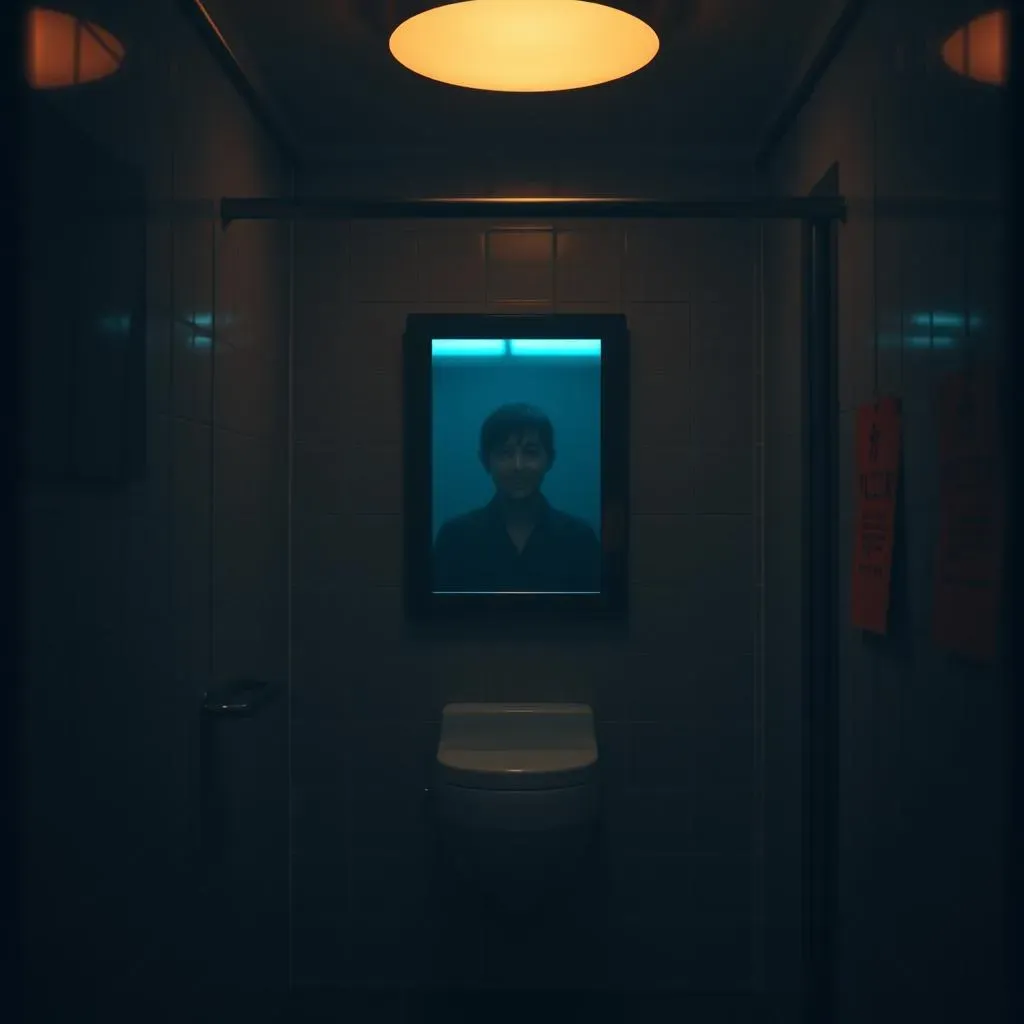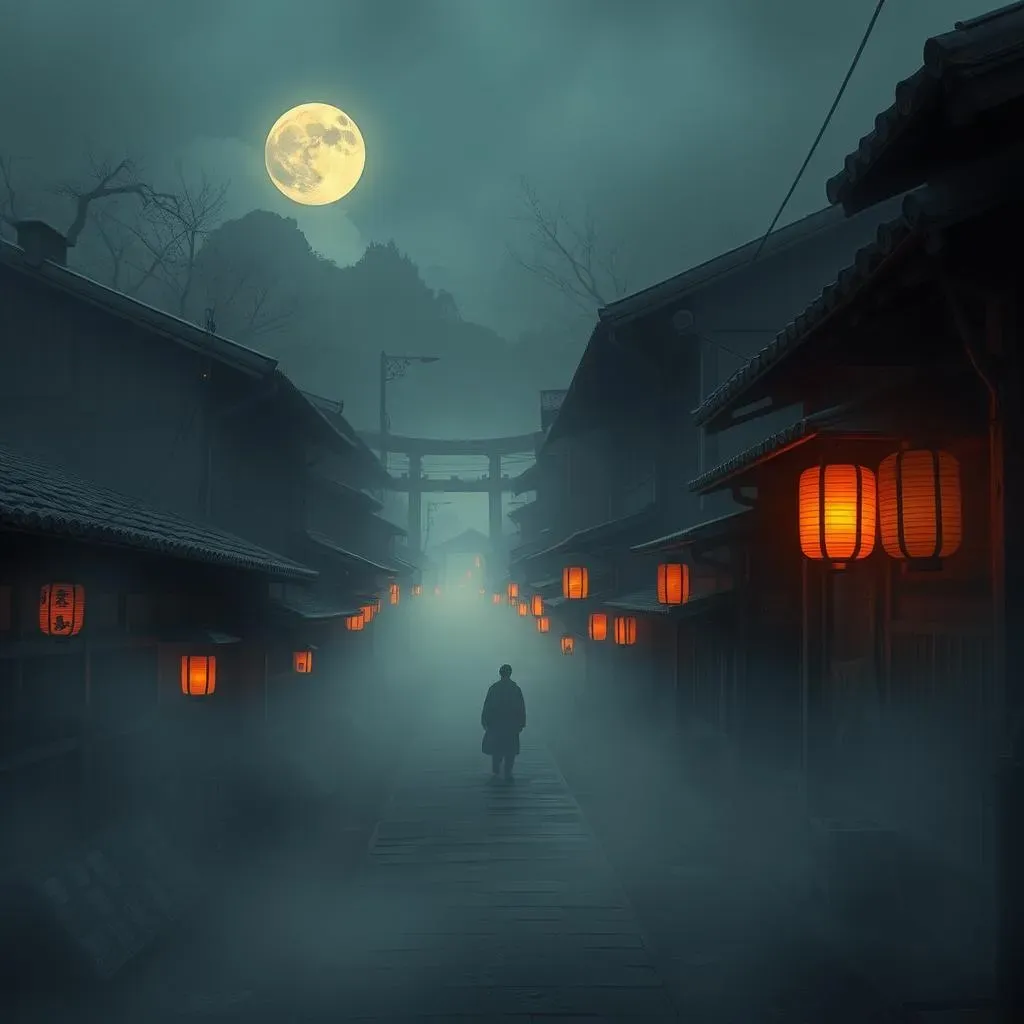Table of Contents
Ever heard a story that made your skin crawl? Japan is full of them, whispers passed down through generations, tales so spooky they just might be true. These aren't your average ghost stories; we're talking about **cursed japanese urban legends**, the kind that linger in the back of your mind long after you hear them. From eerie encounters in public restrooms to vengeful spirits hitching rides, Japanese folklore has a knack for the unsettling. This article will guide you through some of the most spine-chilling tales. First, we'll look at some legends that might have real-world explanations. Then, we'll plunge into the truly supernatural, exploring the stories of malevolent entities and their terrifying curses. Finally, we'll talk about why these legends persist and how to navigate the unsettling world of **cursed japanese urban legends**. Ready to explore the shadows? Let's begin.
Natural Explanations Behind Japanese Urban Legends
Natural Explanations Behind Japanese Urban Legends
Okay, so you're digging into these creepy Japanese urban legends, huh? It's easy to get caught up in the spooky stuff about ghosts and curses. But sometimes, there's a more down-to-earth reason behind these tales. Take the story about the Shirokiya Department Store fire in 1932. The legend says that women refused to jump into the safety nets because they were worried about being immodest. Sounds dramatic, right? But historians actually think it's more likely they simply didn't have time to react in the chaos and smoke. Sad, but probably more accurate than a mass wave of modesty-related hesitation.
Supernatural Tales of Cursed Japanese Urban Legends
Supernatural Tales of Cursed Japanese Urban Legends
Aka Manto: The Bathroom Terror
Now, let's get to the really creepy stuff. Ever heard of Aka Manto? This is one legend that makes you think twice about using public restrooms. Imagine this: you're in a stall, minding your own business, and a voice asks if you want red paper or blue paper. Sounds harmless, right? Wrong. Choose red, and you're said to be violently slashed. Pick blue, and you might just be strangled. There's no winning with this ghostly bathroom attendant. It's the kind of story that makes you hold it until you get home.
The Curse of Colonel Sanders
Sports fans can be a superstitious bunch, and the Hanshin Tigers in Japan have a doozy of a curse. It's called the "Curse of the Colonel." Back in 1985, when the Tigers won the Japan Championship Series, ecstatic fans celebrated by throwing a statue of Colonel Sanders – you know, the KFC guy – into a river. Since then? The Tigers haven't won a championship. Some say the Colonel is still salty about his dunking. It's a funny story, but if you're a Tigers fan, it's probably not so hilarious.
Think about it, a fast-food mascot holding a grudge for decades? It's the kind of dedication you rarely see.
Legend | Description | The Curse |
|---|---|---|
Aka Manto | A malevolent spirit in bathroom stalls | Fatal consequences based on paper color choice |
Curse of the Colonel | Statue of Colonel Sanders thrown into a river | Hanshin Tigers haven't won a championship since |
Kuchisake-onna: The Slit-Mouthed Woman
Here's another one that'll make you avoid walking alone at night. Kuchisake-onna is the vengeful spirit of a woman with a grotesquely mutilated mouth. She approaches people, often wearing a surgical mask (which, let's be honest, is pretty common in Japan, adding to the unease), and asks, "Am I beautiful?" If you say no, well, that's bad news. But even if you say yes, she removes her mask to reveal her horrifying smile and asks again. There are different versions of what happens next, but none of them are good. Running away is your best bet, though some tales say offering her candy might work... maybe.
Navigating the World of Cursed Japanese Urban Legends
Navigating the World of Cursed Japanese Urban Legends
Sorting Fact from Fiction in Cursed Japanese Urban Legends
So, you're hooked on these creepy tales, right? It's easy to get lost in the spooky details. But when you're looking at **cursed japanese urban legends**, it's good to keep a bit of a level head. Think of it like this: some of these stories are like really old games of telephone. They start with a tiny bit of truth, maybe a real fire or a local oddity, and then get exaggerated and twisted over time. That Shirokiya fire? Definitely happened. The specific details about why women didn't jump? Probably not. It's all about separating the "whoa, that's creepy" from the "hmm, that's interesting history."
Why Do These Cursed Japanese Urban Legends Stick Around?
Ever wonder why these **cursed japanese urban legends** don't just fade away? I think it's because they tap into some really basic human stuff. Fear of the unknown? Check. Anxiety about everyday situations, like being alone in a public place? Double-check. Plus, these stories often serve as warnings, even if they're dressed up in scary costumes. Think about the bathroom ghost stories – maybe they're a weird way of reminding kids to be careful when they're out and about. And let's be honest, a good scare is kind of fun, right? It's like riding a rollercoaster – you're terrified, but you also kind of enjoy the thrill.
Engaging Respectfully with Cursed Japanese Urban Legends
Now, if you're planning on writing about **cursed japanese urban legends**, or just sharing them, a little respect goes a long way. These stories are part of Japanese culture, and even if they're spooky, they often have deeper meanings or connections to local history. It's not really cool to just laugh them off or treat them like they're silly. Instead, try to think about why these stories are told and what they might mean to the people who share them. Are they cautionary tales? Are they a way of dealing with fears? Approaching them with curiosity and respect can make the whole experience way more interesting, and you'll probably get a better story out of it, too.
Element | Consideration |
|---|---|
Origins | Are there real events that might have inspired the legend? |
Themes | What fears or anxieties does the legend represent? |
Cultural Context | How does the legend fit into Japanese culture and beliefs? |
Conclusion: The Enduring Allure of Cursed Japanese Urban Legends
So, we've journeyed through the shadowy alleys and haunted schoolhouses of Japan's urban legends. From stories with possible real-world roots to those that send shivers down your spine with their supernatural dread, these tales offer a glimpse into the cultural anxieties and imaginative storytelling of Japan. Whether you believe in vengeful spirits or simply enjoy a good scare, the enduring popularity of **cursed japanese urban legends** speaks to our fascination with the unknown and the power of a well-spun yarn. Next time you're in a public restroom or waiting for a taxi, maybe you'll think twice – just in case.
